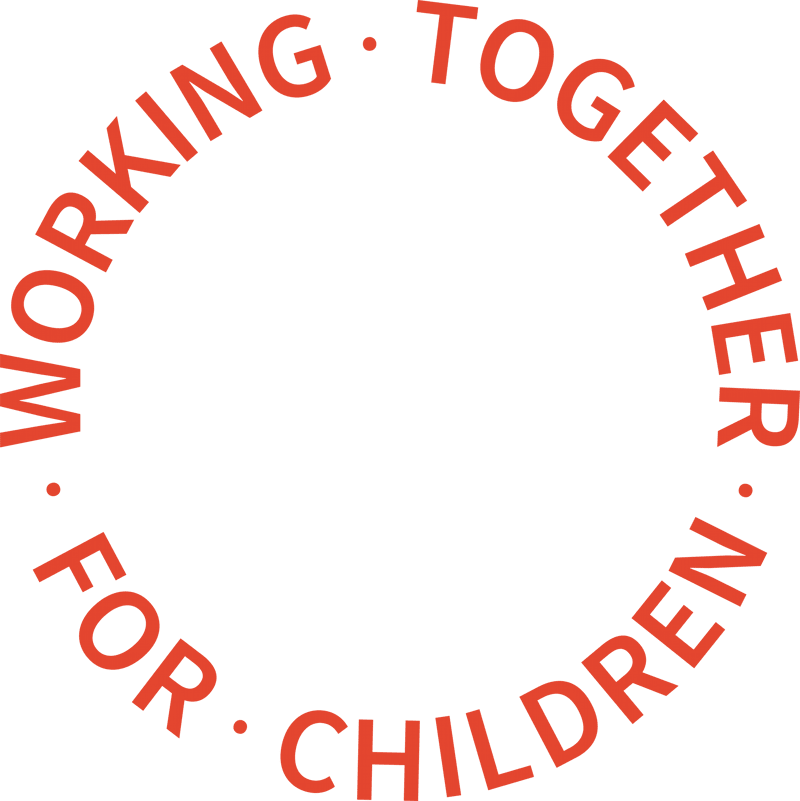Play and drama therapist Joan Moore talks about using creative arts to engage with children

Creative arts are the most effective methods of therapy to enable children and young people to accept their pasts and attach securely, an expert in play and dramatherapy has stated.
Independent Social Worker, therapist and Adoption Support Provider, (ASA) Joan Moore says that research evidences that children tend to respond better to creative therapies than to more conventional forms of therapy, which rely on talking directly about the problem.
“Through stories, children and young people find out how the protagonist handles problems and learns from it. It can give children a sense of ‘that’s how it’s done’, even if it’s on a subconscious level,” explains Moore. “Children explore their world using the five senses and play.”
‘I loved the constant buzz’
Moore has more than 30 years’ experience in the field of social work, and her initial interest in social work came from working in camps in the Scottish Isles, which aimed to keep children out of trouble. Having initially trained as a teacher, she took a post-graduate qualification in community and youth work, following which, Moore started working for Essex County Council as a community worker in Harlow before joining the London Borough of Newham’s Intermediate Treatment Team where she worked with young people in the Juvenile Justice and Care Systems between 1980 and 1989. Moore ran young offenders groups, researched the position of girls and young women in the criminal justice system and care system, and set up a steering group which led to the development of the Stop Gap project, for keeping young women out of the care and justice systems.
During that period she was seconded to the CQSW social work training course. Three years after completing her qualification, Moore took time out to have a family, which meant it was seven years before she restarted work as a qualified social worker and during that time, things had changed a lot, for example, there was now a computer on every desk. It was also a leap moving from youth justice to child protection work.
“I enjoyed it. I loved the constant buzz of it and the face to face work,” says Moore. “Fairly early on I knew I wanted to specialise in play therapy using creative arts, rather than go into management.”
“I’d worked with a lot of children, who often didn’t understand why they were being removed from their families and placed in foster care. I’d moved around a lot so I knew how difficult it can be to start over and I also realised how important it was to communicate through play, from having my own children,” she added.
A lot of children I work with have never learned how to play
In 1999, Moore trained in play therapy at Northampton. Play therapy is a form of counselling or psychotherapy in which play and creative materials are used as a means of helping children express or communicate their feelings. “It is used to alleviate their psychological problems which can be preventing them from reaching their potential,” adds Moore.
Play therapy is used in a variety of different situations and circumstances: in schools, hospitals, court assessments, family centres as well as with children who are being placed in kinship, fostering or adoption, which is Moore’s area of speciality. Children receiving play therapy tend to be aged between three and 12 since some young people older than 12 would shirk at the idea of ‘play’. However, play therapy can be helpful for older children who have learning difficulties and forms of play therapy using creative arts are also being used with older people.
“Traditionally play therapy training teaches you to be non-directive, and let the child lead the play,” says Moore. “However, a lot of the children I work with have never learned how to play and need help to do so. I also involve the foster or adoptive parent, to form a safer attachment.”
The sessions tend to be 50 minutes to an hour long for children aged five and over, although they would be shorter for younger children. Where the adoptive parents are confident in their ability and attachment, Moore may use six to 10 sessions. But when children are more traumatised, she will work with them for as long as is needed to secure their attachment.
Moore uses a variety of materials including dressing up clothes, dolls, toys, play dough and clay alongside techniques using candles and water. “I play various roles, I may be a hapless pirate who cannot walk in a straight line and needs help, or a witch who is fed up of being horrible and wants people to like her but doesn’t know how to change. Children often tell the witch she needs to wear nicer clothes, be kind to people and helpful. Realising they know the answers encourages the children,” she explains.
In one situation, the mum of a six-year-old boy called Davey*, was an alcoholic and Moore had a number of sessions with Davey in the family home. Davey drew a cartoon story of his favourite super-hero Spiderman who asked his friend Batman to help him with a mission, which was to remove a large box of bottles from the family home. Davey was expressing how he wanted his house to be alcohol free so his mum would cook him proper dinners but unfortunately, in real life, his mother could not do that. Fortunately, Davey’s father stepped in to take on care of the children and when Moore was working with Davey in a later session, he drew a cartoon of Batman and Robin playing with a dinosaur, which represented his dad. Davey had used the play therapy to make sense of what had happened and this helped him forge a more secure attachment to his father.
The aim is for the child to be secure in their attachment
Moore explains that it is important to be familiar with the child’s history and background story before you start the sessions with them. This helps you to recognise when children are talking about their own experiences during play and when they are just using their imagination. Building trust between you and the child is essential in these sessions though and Moore says if the children feel safe they will tell you about their experiences during play. So, while enacting a story in which, say, the king is being horrible to the princess, the child may say something like, “it’s like my dad was to me.” If themes and examples come up repeatedly then the practitioner can see this is something the children have experienced for themselves. “You have to keep an open mind. It’s important to respect the child’s privacy by keeping to the context of the story and asking about the character, but to avoid asking leading questions that might be difficult for the child,” explains Moore.
“The aim is for the child to be secure in their attachment with the caregiver and realise their potential,” adds Moore.
Having recognised the power of drama for helping children to understand their life stories, Moore undertook drama therapy training between 2002 and 2005. This included group work with 16-19- year-olds and parents with mental ill health alongside developing her “Theatre of Attachment” model. On qualifying, she registered with the Health and Care Professions Council.
Dramatherapy is a form of psychological therapy in which all of the performance arts are utilised within the therapeutic relationship. However, Moore says this definition can sound quite medical and she prefers Sue Jennings’ (1997) definition, which describes it as ‘the specific application of theatre structures and drama processes with a declared intention that it is therapeutic, healing or beneficial to the participants’.
Dramatherapy is used with groups and individuals, for people with mental health problems in clinics or hospitals, also in schools and with children being adopted, fostered or in kinship care. Moore uses drama to help children to understand their life story and attach securely to their new parents.
Children are almost always self-blaming
Linked to this is Moore’s ‘Theatre of Attachment’ model, which aims to forge a secure attachment of children in adoption, fostering or kinship arrangements between the caregiver and the child who has suffered abuse and neglect in their birth family. Play is proposed as the most natural way to increase empathy between children and their adoptive parents. Their joint engagement in ‘make-believe’ enables them to jointly discover new perspectives as well as heightened self-awareness.
“The child’s life story is explored, initially using metaphor because fictional contexts provide the privacy of distance that allows us to confront what may otherwise be too disturbing or painful,” explains Moore. “I find that working in the child’s home, and involving the parents, along with using sensory materials, assists transfer of learning from the therapeutic play space to daily life.”
Sessions are usually around an hour and adoptive or foster parents are involved from the beginning. They might start by playing out a story using toys or dressing up, or clay or play dough or puppets. After focussing on aspects of the life story, children process their memories in child-led play.
Following the first session on story making, the second one starts to concentrate on the life story, using a life map of the various houses the child lived in, with toy figures representing birth parents and various scenes will be acted out. Moore uses a range of techniques such as inviting the child to make ‘three wishes’. Often children will make a wish for something like chocolate or a toy but sometimes they reveal bigger worries or concerns. For instance, once a child wished that he could live with his sister who was in a different placement. Learning of his wish meant Moore could work with the boy on those issues and explain that his sister had a disability that meant she needed specialist care, so the boy would have far less attention and treats because the foster carers would have to be focusing on his sister and her needs rather than on him and his needs.
In another situation a child may say everyone hates them, and this enables Moore to work with the child on how to go about making and keeping friends. In these instances, Moore explains that the use of clay can be helpful, as children can see that the clay goes from being soft to hard during the session. This helps the child to experience change as being possible for them to achieve too.
Moore writes up the life story work and it is all placed in a folder for the young person and aims to build their self-esteem and sense of self-worth.
‘It was a real turning point for him.’
Moore adds that children are “almost always self-blaming” and that processing their life story releases them from self-blame for events over which they had little control. It also corrects wrong assumptions by helping children to contextualise the rejections and neglect they have experienced.
Moore gives the example of a 12-year-old with whom she was carrying out life story therapy. He had been adopted when he was seven years old and was repeatedly getting into trouble and being excluded from school. His birth parents were both alcoholic and the father had been violent. The boy was convinced that his mother would have been ok had she received more support.
The adoptive family acted out scenes in which Moore acted as the ‘birth mother’ who presented at ‘hospital’ with a broken arm. The boy, acting as the ‘doctor’ was reminded by the ‘nurse’ (his adoptive mum) that the mother would not be able to have her operation to mend her broken arm until the effects of alcohol had worn off because the anaesthetic might not work. The ‘doctor’ refused to treat the patient (his mum), saying she had done this to herself and he could not help her. Moore explains that until this moment, the boy had been very protective over his mother, which had prevented him from forming a secure attachment to his adoptive parents.
“This was a real turning point for him. Shortly afterwards the family moved to a new area and the boy went to a new school. Within a few weeks he had settled well at school and moved up several groups. He joined the army cadets and had a girlfriend, who his parents liked,” said Moore. “It was quite amazing and very rewarding.”
Moore is currently studying a PhD at Leeds Beckett University where she is examining the responses of children age 7-9 years and their adoptive/foster parents to methods she has developed for facilitating secure attachment, where the children’s past trauma has made this problematic.
In the research, which is supported by the Association of Directors of Children’s Services http://adcs.org.uk/ , Moore aims to answer the following questions:
- What is the impact on the children in adoptive, foster, and kinship families of learning about their life history through the collaborative performance of scenes, based on the shared narrative of their experience?
- How does situating the intervention in the family home facilitate change?
- How does the therapist’s use of self and specific techniques enable children to reframe their history?
‘My aim is to see the children develop from victims to heroes in their own story’
So far, in preliminary findings and feedback from participants, Moore has discovered that modelling how to communicate with the children through play is effective in bringing about change. Introducing a story then enabling them to create their own story in play, giving them approval and encouragement is mirroring the ‘inter-subjective’ infant-parent interaction (Trevarthen 2005; Hughes 2006) that they missed in birth family and from the regular repetition of this interaction the child will ultimately begin to self-actualise. The story-making process gives children affirmation and raises adoptive/foster parents’ empathy.
“A really important component is the sheer experience of joy and having fun, which helps to protect the brain against the impact of sadness and depression,” adds Moore.
Attachment theory - which asserts that a strong emotional and physical attachment to at least one primary caregiver is critical to young children’s development - underpins everything that Moore does. Children have often experienced separation or rejection and if you can understand the quality of the child’s experience, you can understand how to support the child via nurture and attention. For example, the child with an avoidant attachment, whose birth parent had been emotionally unavailable or unresponsive much of the time, might paint a picture of a landscape that was empty. Moore would then suggest introducing an animal, say, a rabbit, to the scene, and that the rabbit might like a friend. A conversation between these characters can begin. This helps the child to understand why he or she needs people and is better off having nurturing relationships with people.
Moore says that the process can often soothe children and reduce their habit of self-blame. As a result, the children often say that they feel as though a weight has been lifted from their shoulders. “Children begin to reassess their survival of adversity as ‘heroes’ rather than ‘victims,’” she adds. “To see children stand in front of me and tell me their story is the most rewarding part. They may start off as victims but to see them reconstruct their identity as heroes – that’s my aim,” she concludes.
Joan Moore is author of Once Upon a Time…stories and drama to use in direct work with fostered and adopted children, which is full of imaginative and thought-provoking examples of stories, dramatic play and role play which illustrate how to play with a child in an emotionally meaningful way, how to use stories to enhance understanding and how stimulating the child's imagination can enhance problem solving skills and self-esteem. http://corambaaf.org.uk/bookshop/once-upon-time
*Not his real name


